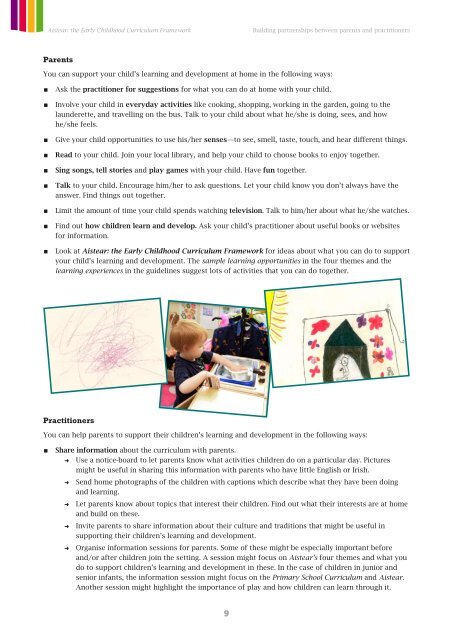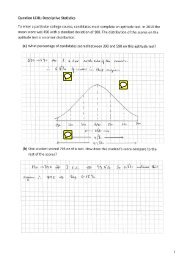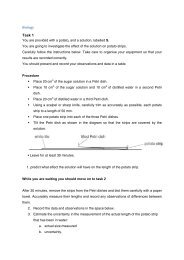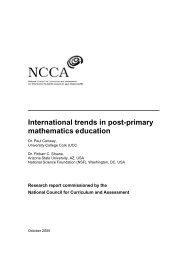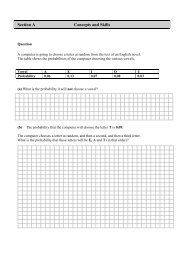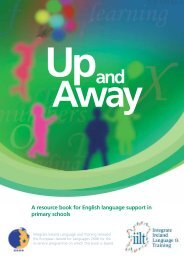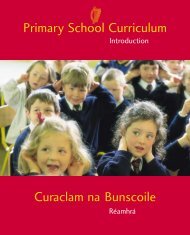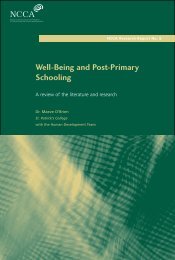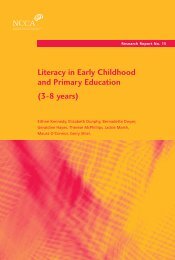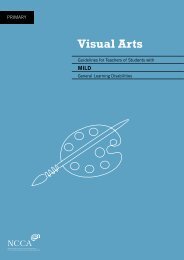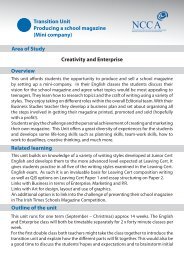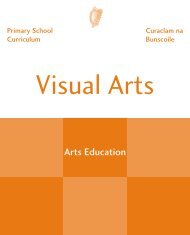Building partnerships between parents and practitioners - National ...
Building partnerships between parents and practitioners - National ...
Building partnerships between parents and practitioners - National ...
Create successful ePaper yourself
Turn your PDF publications into a flip-book with our unique Google optimized e-Paper software.
Aistear: the Early Childhood Curriculum Framework<br />
Parents<br />
9<br />
<strong>Building</strong> <strong>partnerships</strong> <strong>between</strong> <strong>parents</strong> <strong>and</strong> <strong>practitioners</strong><br />
You can support your child’s learning <strong>and</strong> development at home in the following ways:<br />
■■ Ask the practitioner for suggestions for what you can do at home with your child.<br />
■■ Involve your child in everyday activities like cooking, shopping, working in the garden, going to the<br />
launderette, <strong>and</strong> travelling on the bus. Talk to your child about what he/she is doing, sees, <strong>and</strong> how<br />
he/she feels.<br />
■■ Give your child opportunities to use his/her senses—to see, smell, taste, touch, <strong>and</strong> hear different things.<br />
■ ■ Read to your child. Join your local library, <strong>and</strong> help your child to choose books to enjoy together.<br />
■ ■ Sing songs, tell stories <strong>and</strong> play games with your child. Have fun together.<br />
■ ■ Talk to your child. Encourage him/her to ask questions. Let your child know you don’t always have the<br />
answer. Find things out together.<br />
■■ Limit the amount of time your child spends watching television. Talk to him/her about what he/she watches.<br />
■■ Find out how children learn <strong>and</strong> develop. Ask your child’s practitioner about useful books or websites<br />
for information.<br />
■■ Look at Aistear: the Early Childhood Curriculum Framework for ideas about what you can do to support<br />
your child’s learning <strong>and</strong> development. The sample learning opportunities in the four themes <strong>and</strong> the<br />
learning experiences in the guidelines suggest lots of activities that you can do together.<br />
Practitioners<br />
You can help <strong>parents</strong> to support their children’s learning <strong>and</strong> development in the following ways:<br />
■ ■ Share information about the curriculum with <strong>parents</strong>.<br />
➜■<br />
Use a notice-board to let <strong>parents</strong> know what activities children do on a particular day. Pictures<br />
might be useful in sharing this information with <strong>parents</strong> who have little English or Irish.<br />
➜■<br />
➜■<br />
➜■<br />
➜■<br />
Send home photographs of the children with captions which describe what they have been doing<br />
<strong>and</strong> learning.<br />
Let <strong>parents</strong> know about topics that interest their children. Find out what their interests are at home<br />
<strong>and</strong> build on these.<br />
Invite <strong>parents</strong> to share information about their culture <strong>and</strong> traditions that might be useful in<br />
supporting their children’s learning <strong>and</strong> development.<br />
Organise information sessions for <strong>parents</strong>. Some of these might be especially important before<br />
<strong>and</strong>/or after children join the setting. A session might focus on Aistear’s four themes <strong>and</strong> what you<br />
do to support children’s learning <strong>and</strong> development in these. In the case of children in junior <strong>and</strong><br />
senior infants, the information session might focus on the Primary School Curriculum <strong>and</strong> Aistear.<br />
Another session might highlight the importance of play <strong>and</strong> how children can learn through it.


